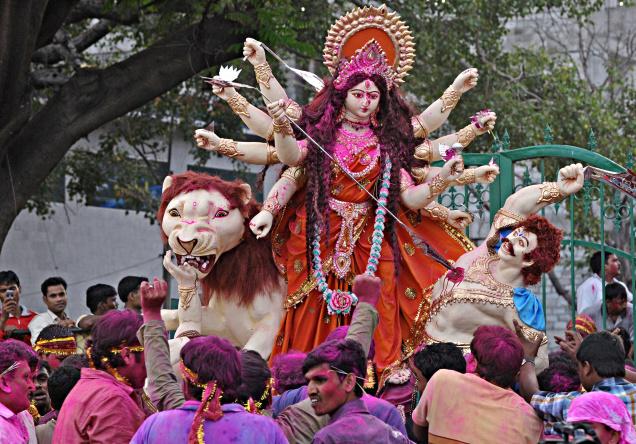Bangalore, October 11: This Durga Puja, activities of the Bengali Association in Ulsoor are centred around bringing a new generation of Bengalis into the fold of cultural activities.
Indeed, in the 64 years that the Bengali Association in Ulsoor has organised the festival, the Durga Puja has grown in size and reach. With its modest beginnings in Bangalore in 1949, when a simple “ghot puja” (where Durga is symbolised by a pot filled with ‘holy’ water) in Malleswaram marked the occasion for Bengalis from the Indian Institute of Science and public sector industries, the puja has now grown into a hugely popular affair.
And while the Palace Grounds may be the new venue for Durga Puja celebrations, Ulsoor remains the core of the festival, and the Bengali Association here the focal point of festival organisations, whether food, music, dance, competitions or those dramatic pandals that depict Durga’s many moods. The festival is nothing short of a carnival, not least with the youth.
Enthusiasm
“Kids these days can easily get detached, especially when they are away from the centre of all the action. But our children enthusiastically take part in serving bhog prasad on all days of the festival to nearly 5,000 visitors,” says Dilip Maitra, vice-president of the association.
More than four lakh Bengalis live in Bangalore. Runu Ray, president of the association, says she organises classes to train children in Bengali. “But it did not take off as well as we expected it to… children were not willing to learn a language beyond their school syllabus,” she says.
As it grows, the puja embraces more than the city’s Bengali diaspora, and the 10-day festival has become an essential part of Bangalore’s festival fabric.
More than 30 per cent of the visitors to the Durga Puja pandal in Ulsoor are non-Bengalis, says Robin Majumdar, general secretary of the association.
Popular support
In fact a fraction of the association’s 4,000-odd members happen to be non-Bengali, say the organising committee members of the association. “Many non-Bengalis are just really fond of our traditions, culture and food and so they seek membership,” they add.
And in an attempt to have events of the association remain appealing to both Bengalis and non-Bengalis in the city, the organisers have tried to make them current and contemporary, says Ms. Ray. “Especially during the puja we keep the events as universal in nature as we can.”
More than 14,000 people turn up for the immersion at Ulsoor lake.

